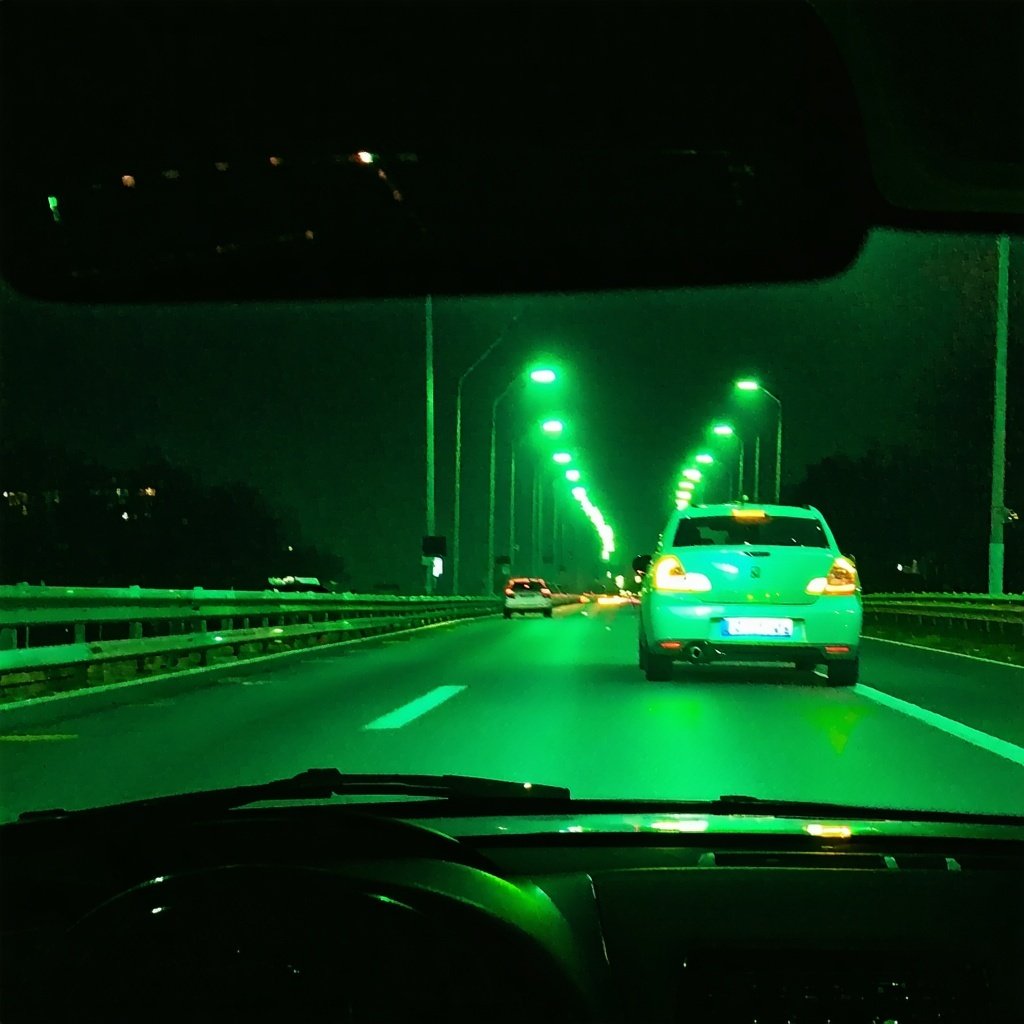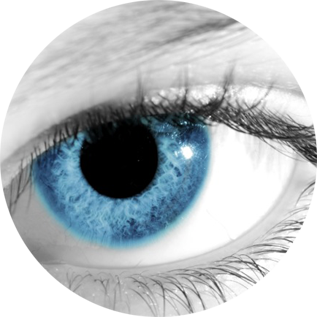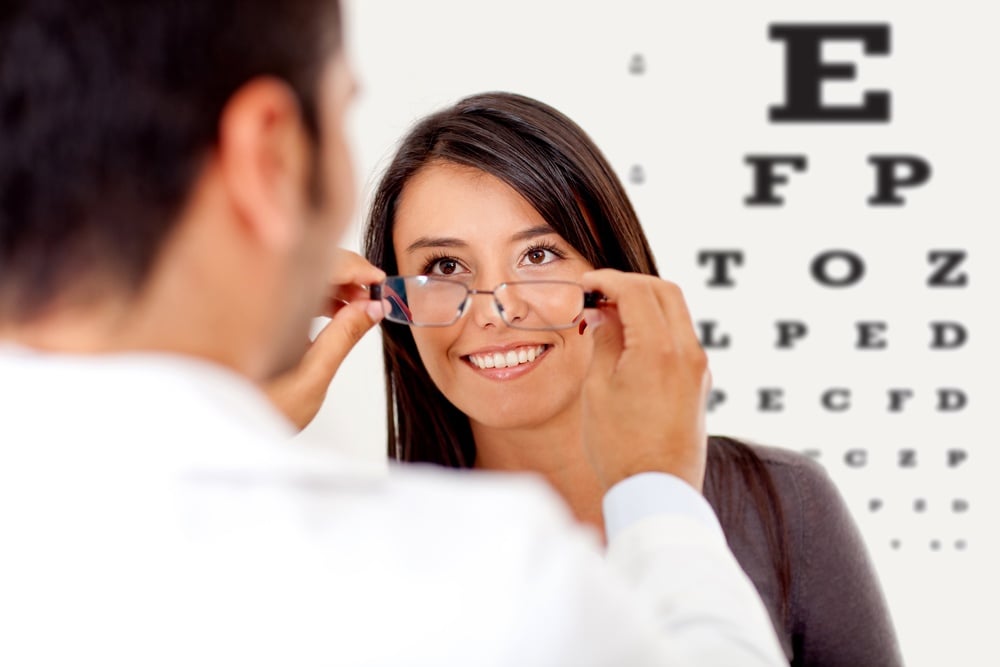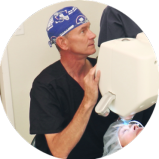Does Your Eyelid Twitch? Learn What It Means
It happens to the best of us at some point in our lives; you could be sitting in a movie theater, driving to work, or just relaxing on the couch,...
4 min read
Guest Author Aaron Barriga : Jun 27, 2025 12:48:50 PM

Driving is a privilege and one that depends heavily on your eyesight. Your eyes provide an astounding 90% of the information required to drive safely. Unfortunately, vision problems while driving, like difficulty with night driving or blurry vision while driving, are more common than you might think. Also, their impact on road safety is profound.
This article is here to explore which vision problems affect driving, how they translate to real life behind the wheel, and what you can do to protect yourself and your loved ones.
Visual Issues That Impact Driving
Let's examine the most common eye conditions that jeopardize driving safety:
Near-sightedness and Farsightedness
Near-sightedness (myopia) makes it challenging to see objects at a distance, such as traffic lights or oncoming vehicles. Farsightedness (hyperopia), on the other hand, can cause eye strain and make it difficult to focus on close-up details like your dashboard or GPS.
Both conditions can blur your vision, reducing reaction times and endangering everyone on the road.
Astigmatism
A common refractive defect brought on by an unevenly shaped cornea or lens is astigmatism. Both close-up and far-off vision are distorted. Are you curious about what does astigmatism look like? Increased glare, halos, or streaks around lights are common symptoms of astigmatism that can cause problems, especially in low light.
Blindness to Color
Around 1 in 200 women and 1 in 12 men globally are color blind, in case you were unaware. A lack of color vision can make it difficult to distinguish between road signs, brake lights, and traffic lights. This issue could lead to confusion and reduced reaction times.
Nyctalopia (Night Blindness)
Nyctalopia impairs your ability to see in low light or darkness, a significant night driving problem. If you suffer from poor vision while driving at night, you may struggle to spot pedestrians, animals, or obstacles in poorly lit areas, increasing accident risk.
Dry Eyes
Persistent dry eyes are more than a nuisance. The grittiness, burning, or stinging associated with dry eyes can blur your vision or trigger distracting bursts of discomfort. It can be challenging to maintain focus with blurry vision while driving.
Cataracts
The World Health Organization reports cataracts as the leading cause of blindness worldwide. Drivers with cataracts often complain about night driving problems and sensitivity to bright lights, two factors that are strongly linked to collisions.
Macular Degeneration
With age-related macular degeneration (AMD), central vision steadily deteriorates, making it challenging to see ahead, read road signs, and identify faces. In the US alone, AMD affects around 11 million people, impairing their independence and ability to drive.
Glaucoma
The optic nerve is harmed by glaucoma, which frequently impairs peripheral vision before affecting central vision. If left untreated, glaucoma can cause "tunnel vision," which makes it very difficult to change lanes, merge lanes, or see hazards from the side.
What Effects Do Vision Issues Have on Driving?
Vision issues significantly change how you interact with your surroundings when driving. Here are some common ways that vision problems could appear while driving:
Streaky or Blurred Lights
Streaks, halos, and glare around lights are especially troublesome at night. This effect is intensified if you have astigmatism. You may experience increased glare, halos, or streaks around lights (known as “astigmatism lights”), which can force you to squint in an attempt to focus. This can lead to eye strain and make night driving significantly riskier.
Diminished Visual Acuity
Visual acuity refers to the sharpness or clarity of your vision. Any reduction, even minor, impacts your ability to see obstructions, read street signs, or see pedestrians. For example, you may not detect a red light until it’s too late or struggle to recognize road hazards in time to escape them.
Distant Objects & Blurry Road Signs
Even a slight blurry vision while driving might increase your chances of not seeing traffic signs in time, particularly when in a hurry. One of the most frequent causes of crashes is last-minute maneuvres brought on by an inability to read signs or recognize approaching exits.
Reduced Ability to Perceive Depth
Your ability to perceive depth is essential for safely stopping at intersections, parking, and passing cars. This ability can be hampered by conditions like cataracts and macular degeneration, which can endanger you and other drivers, especially when you are driving quickly.
Challenges With Night Vision
Problems with night vision can make it extremely difficult to see the road, pedestrians, animals, or obstacles after sunset. Many drivers with night vision issues avoid night driving at all. But for those who must, accident rates are substantially higher.
When you can’t see clearly, your brain takes longer to process information and make decisions. This delay could mean that you might not be able to stop in time for a pedestrian.
Having Trouble Viewing Your Dashboard
Your dashboard, which indicates your speed, fuel level, and any warning lights, is your mission control. It may be tough to swiftly scan this information due to vision issues, which could lead to distraction or the missing of crucial vehicle alarm cues.
Glare, particularly from oncoming headlights or street lamps, can dazzle even those with healthy eyes. For anyone with cataracts or uncorrected refractive errors, glare is often intensified. It can contribute to blurry vision while driving or momentary blindness that leads to dangerous situations.
No wonder drivers with untreated cataracts are 2.5 times more likely to be involved in a crash.
You wouldn’t drive a car with worn-out brakes or bald tires, Right? That is precisely why you shouldn’t neglect your own “built-in safety feature,” your eyesight!
Your vision isn’t just about seeing what’s ahead. It’s also about seeing everything that matters when every second counts on the road. Ignoring blurry vision while driving or night driving problems is not only a personal risk but also a public safety concern.
If you’ve ever caught yourself squinting at headlights, frustrated by difficulty with night driving, or anxious about vision problems while driving, don’t wait until a close call to act. Schedule an eye exam, assess your risk for conditions like astigmatism, and stay informed.
Wishing you a happy journey toward safer roads and greater peace of mind!

It happens to the best of us at some point in our lives; you could be sitting in a movie theater, driving to work, or just relaxing on the couch,...

Choosing an eye care provider is an important health care decision. After all, you will be trusting youreye doctorto safeguard your precious...

A cataract occurs when the natural lens in the eye -- which is normally clear -- becomes cloudy. This can distort your vision and make it...